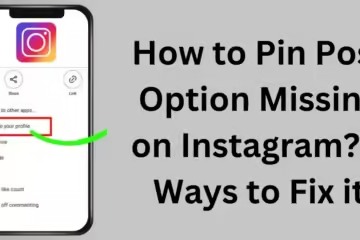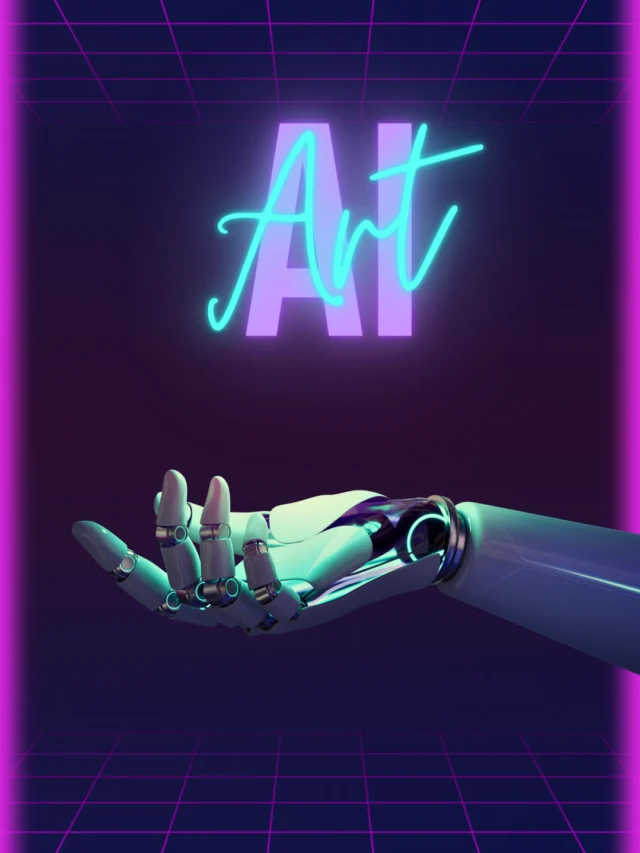The Potential of Innovate the Future – Augmented Reality Technology
Augmented Reality is technology. AR has the ability to enhance objects in the physical world digitally. It overlays virtual objects and information in a real-world environment. This technology has immense potential to innovate our future, from industrial applications to entertainment and gaming. Augmented Reality is eligible to transform the way to interact with the world around us.
We can use it to create an awesome experience that can change the way to play, learn and work. For example, AR can be used to provide contextual information about our environment and to help us navigate unfamiliar places. It can also be used to create interactive gaming experiences where players can interact with virtual objects in their physical environment.
AR technology has already been adopted in many industries, from healthcare to architecture and engineering. AR-based applications are being used to reduce costs and improve efficiency in these industries. For example, in healthcare, AR can be used to provide real-time patient data to doctors and nurses. In architecture, it can be used to help visualize building plans and help engineers design more efficient structures.
The potential of AR to innovate the future is limitless. As AR technology continues to evolve and become more accessible, we will see more applications of this technology in our everyday lives. It has the potential to create a world where the physical and digital worlds merge, making our lives easier and more efficient.
Overview of Current Trends in Augmented Reality Technology
Augmented Reality technology is increasing in recent years and many companies and developers are taking advantage of the potential it offers. From marketing campaigns to gaming, AR has opened up a wealth of new possibilities for a range of applications. To better understand the current trends in AR technology, it’s important to look at the various types of AR and what development teams are doing to make the most of this exciting technology.
One of the main types of AR being used right now is marker-based AR. This utilizes a marker or a recognizable image that is tracked by a device’s camera. By tracking markers, the device is then able to overlay digital images on the marker’s position. This can be used to bring digital experiences to physical objects, such as in games or museum exhibits. Another type of AR is known as location-based AR.
This is a more advanced form of AR, as it enables users to interact with digital objects in a real-world environment. This is usually done through the use of GPS and other location data, allowing users to access digital content based on their location. This can be used to provide information, such as maps or directions, or to create an interactive gaming experience. Finally, the most recent trend in AR technology is the use of artificial intelligence (AI). AI can be used to provide more accurate and complex augmented reality experiences.
This is done by using AI algorithms to analyze and interpret data, allowing AR to be more responsive and personalized. For example, AI can be used to recognize objects in an image or detect gestures and voice commands. This can be used to create more immersive experiences for users. Overall, the current trends in AR technology are focused on making AR experiences more interactive, immersive, and personalized. We can expect to see more innovative or exciting applications of Augmented Reality in the future because this technology is becoming more accessible.
Exploring the Benefits of Augmented Reality Technology
This AR technology is revolutionizing the way we interact with the world around us. Augmented Reality has the potential to revolutionize the way to communicate, engage, interact, and learn with the world. By blending the physical and digital worlds, AR can create a unique and immersive experience. AR can be used in a variety of different ways. For example, it can be used to enhance education, allowing students to engage with interactive 3D models of concepts, and helping them to understand the subject matter more easily.
It can also be used to create interactive shopping experiences, giving customers a more immersive way to shop. AR can also be used to improve safety, by overlaying information onto the environment to help people better understand what’s going on around them. For example, a construction worker might be able to see a 3D model of their worksite, displaying information about what needs to be done and where helping them to stay safe. AR also has the potential to be used for entertainment, allowing people to explore virtual worlds and interact with them in ways that were previously not possible.
For example, a person could play a game that takes place in a virtual world, allowing them to explore the environment and interact with the characters and objects around them. Overall, AR technology has the potential to revolutionize the way we interact with the world. Blending the physical and digital worlds can provide us with new and exciting ways to experience the world around us. It’s an exciting technology that has the potential to make learning, shopping, and entertainment more immersive and engaging than ever before.
Potential Applications of Augmented Reality Technology in Digital Marketing
Augmented reality (AR) technology has the potential to revolutionize digital marketing, offering an immersive and engaging experience to consumers. From interactive ads to product demonstrations, this technology has the potential to revolutionize the way brands interact with their consumers. Here are some potential applications of AR technology in digital marketing.
Interactive Ads
AR technology enables brands to create interactive ads that allow consumers to interact with the product before purchasing it. In this way, consumers can get a feel for the product and better understand its features and benefits. This type of ad experience can be used to increase brand engagement and boost sales.
Product Demonstrations
AR technology can also be used to create interactive product demonstrations. Brands can use this technology to showcase their products in a more engaging and interactive way, allowing consumers to get a better understanding of the product before making a purchase. This type of experience can be used to increase brand loyalty and generate more sales.
Interactive Retail Experiences
AR technology can also be used to create interactive retail experiences. Brands can use this technology to create immersive shopping experiences, allowing consumers to explore the products in more detail and interact with the product in a more engaging way. This type of experience can be used to increase brand loyalty and generate more sales.
Virtual Showrooms
AR technology can be used to create virtual showrooms, allowing consumers to explore products in more detail and interact with them in a more engaging way. This type of experience can be used to increase brand engagement and boost sales. The potential applications of AR technology in digital marketing are almost limitless. From interactive ads to product demonstrations, this technology has the potential to revolutionize the way brands interact with their consumers. By leveraging this technology, brands can create more immersive and engaging experiences for their customers, boosting engagement and increasing sales.
Challenges Faced by Augmented Reality Technology Developers
Augmented Reality (AR) technology is rapidly evolving and has proven to be a powerful tool for transforming the way we interact with the world around us. As this technology becomes more widespread, developers are faced with a number of challenges to ensure that AR technology remains secure and effective. One challenge facing AR developers is the need to create applications that are both reliable and secure. AR technology requires a reliable connection between the user’s device and the AR system, and this connection needs to be secure to protect the user’s data.
Additionally, developers must ensure that the applications they create are able to respond quickly and accurately to user input. Another challenge that developers must face is the need for data privacy and security. As users interact with AR applications, their data must be stored securely to protect their privacy and to ensure that the applications remain secure. Developers must also create applications that can protect user data from potential cyber threats.
Finally, developers must also consider the potential impact of AR technology on the environment. As AR technology becomes more widespread, it may have an impact on the environment, and developers must take this into account when creating applications. Innovative solutions are needed to address these challenges and ensure that AR technology remains secure, reliable, and environmentally friendly. With the right strategies and solutions, developers can create applications that make the most of AR technology while protecting user data and the environment.
Strategies for Overcoming Challenges and Ensuring Success with Augmented Reality Technology
Augmented Reality (AR) technology is revolutionizing the way people interact with digital content. It is allowing us to experience digital content in a whole new way, and it is constantly evolving. However, with such innovative technology, there are bound to be challenges. In order to ensure success with AR technology, it is important to be aware of these challenges and develop strategies to overcome them. The first challenge when it comes to AR technology is the cost.
AR technology requires specialized hardware and software, and developing customized AR content can be expensive. Additionally, companies may need to invest in training and support staff in order to ensure their AR technology is properly utilized. In order to overcome these challenges, it is important to develop a budget that is realistic and prioritize the necessary investments. Another challenge with AR technology is user adoption. Many people are unfamiliar with AR technology and may be hesitant to adopt it. Even those who are familiar with AR may not be willing to invest the time and effort needed to learn how to use it. To address this challenge, companies should focus on creating content that is user-friendly and easy to understand.
They should also provide support and training to ensure users are comfortable with the technology. Finally, security is a major challenge when it comes to AR technology. As more companies use AR to store and share sensitive data, it is important to ensure it is secure. Companies should invest in security measures such as encryption and authentication, and provide user education to ensure their data is secure. Overall, AR technology is a powerful tool that has the potential to revolutionize the way we interact with digital content.
However, there are certain challenges associated with it, and it is important to be aware of these challenges and develop strategies to overcome them in order to ensure success. By investing in hardware and software, focusing on user adoption, and implementing security measures, businesses can ensure their AR technology is used to its full potential.
Conclusion: The Future of Augmented Reality Technology and How it Can Improve Digital Marketing
Augmented reality technology has the potential to revolutionize digital marketing by providing users with immersive and interactive experiences. With the help of AR, brands can create powerful campaigns that deliver an entirely new level of engagement and interaction. It also allows marketers to offer a unique and memorable experience to their customers that can be shared with others. AR technology has the potential to become an integral part of any digital marketing strategy. As technology continues to evolve, brands and marketers have a great opportunity to embrace this technology and use it to reach and engage with their target audience.
By using AR technology, companies can create more personalized and engaging experiences for their customers, which can increase customer loyalty and sales. The future of AR technology is an exciting prospect for digital marketers and brands. With the help of this technology, marketers can create more engaging campaigns that can help maximize their ROI. As technology continues to evolve, marketers will have more opportunities to use this technology to create memorable and engaging experiences for their customers.












